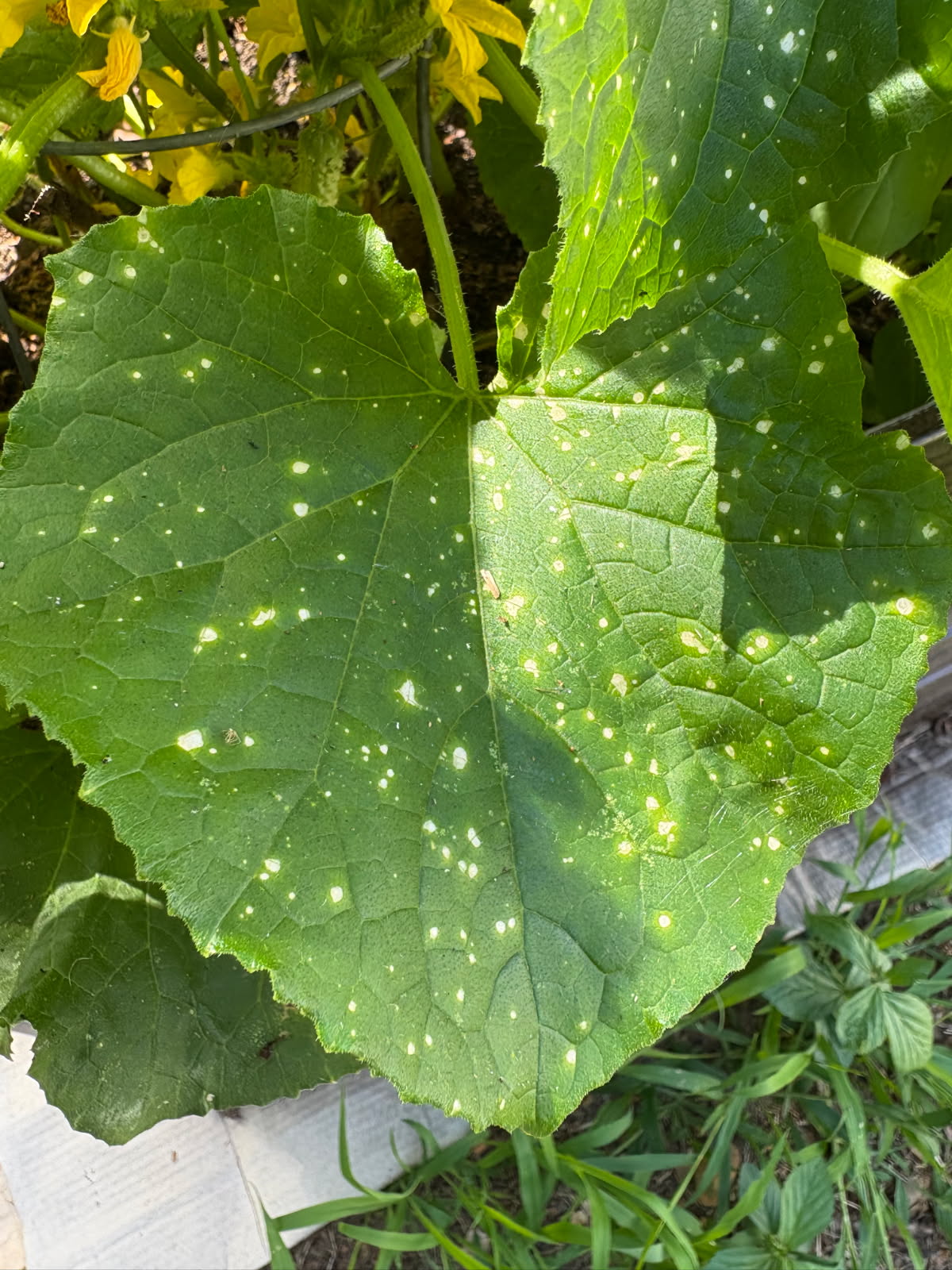Melting in the Rain: Diseases Impacting Our Garden Squashes
go.ncsu.edu/readext?1078635
en Español / em Português
El inglés es el idioma de control de esta página. En la medida en que haya algún conflicto entre la traducción al inglés y la traducción, el inglés prevalece.
Al hacer clic en el enlace de traducción se activa un servicio de traducción gratuito para convertir la página al español. Al igual que con cualquier traducción por Internet, la conversión no es sensible al contexto y puede que no traduzca el texto en su significado original. NC State Extension no garantiza la exactitud del texto traducido. Por favor, tenga en cuenta que algunas aplicaciones y/o servicios pueden no funcionar como se espera cuando se traducen.
Português
Inglês é o idioma de controle desta página. Na medida que haja algum conflito entre o texto original em Inglês e a tradução, o Inglês prevalece.
Ao clicar no link de tradução, um serviço gratuito de tradução será ativado para converter a página para o Português. Como em qualquer tradução pela internet, a conversão não é sensivel ao contexto e pode não ocorrer a tradução para o significado orginal. O serviço de Extensão da Carolina do Norte (NC State Extension) não garante a exatidão do texto traduzido. Por favor, observe que algumas funções ou serviços podem não funcionar como esperado após a tradução.
English
English is the controlling language of this page. To the extent there is any conflict between the English text and the translation, English controls.
Clicking on the translation link activates a free translation service to convert the page to Spanish. As with any Internet translation, the conversion is not context-sensitive and may not translate the text to its original meaning. NC State Extension does not guarantee the accuracy of the translated text. Please note that some applications and/or services may not function as expected when translated.
Collapse ▲Squash plants have probably been churning out squash for a couple weeks and we are just starting to see the first few tomatoes. Yet, we have been experiencing an incredible amount of rain in Lee County over the past two months. On days when we are not expecting any rain we can get a 2-3-inch deluge in no time. While it has resulted in lush growth in our gardens and local ecosystem, it is also leading to an increase in diseases showing up and causing decline and death in our favorite plants. What can desperate home gardeners do to help their squash plants?
Why Rainy Weather Increases Diseases
Squash plants, which have been vigorously producing thanks to the abundant water, are now showing signs of distress. The culprit? An unfortunate convergence of factors fueled by the sustained wet conditions. To understand this phenomenon, one must consider the “disease triangle,” a fundamental concept in plant pathology. This triangle comprises three essential components for disease development: a susceptible host plant, a virulent pathogen, and environmental conditions conducive to the disease. In Lee County, the consistent rain is creating the perfect storm of environmental conditions.
Many plant pathogens, especially fungi and bacteria, thrive in wet environments.  Prolonged leaf wetness provides an ideal breeding ground for these microscopic invaders, allowing them to germinate, infect, and complete their life cycles rapidly. Common squash diseases such as powdery mildew, downy mildew, and angular leaf spot are all known to flourish under these sustained moist conditions, leading to significant yield losses and even plant death.
Prolonged leaf wetness provides an ideal breeding ground for these microscopic invaders, allowing them to germinate, infect, and complete their life cycles rapidly. Common squash diseases such as powdery mildew, downy mildew, and angular leaf spot are all known to flourish under these sustained moist conditions, leading to significant yield losses and even plant death.
Cultural Practices that Can Help Reduce the Likelihood of Disease
Fortunately, gardeners are not without recourse. Several cultural practices can significantly reduce the likelihood of diseases impacting squash plants. Crop rotation is paramount; avoid planting squash in the same spot year after year to break the disease cycle. Promptly removing and destroying any diseased plant material from the garden helps prevent the spread of pathogens. Furthermore, proper plant spacing is crucial. Ensuring good airflow between individual plants allows leaves to dry more quickly, minimizing the time pathogens have to establish themselves.
Caution When Turning to Chemicals
It can seem so easy to go buy a cure in a bottle if you go to a local garden supply store and head down the pesticide aisle. However, when it comes to chemical control, the approach must be specific to the identified disease. Different pathogens, whether bacterial or fungal, have unique life cycles and respond to different chemical treatments. It’s a common pitfall for gardeners to assume they know the problem, only to find their chosen treatment ineffective because the identification was inaccurate.
The best course of action for a diseased plant is to bring a sample to your local Extension Office for diagnosis. This critical first step ensures accurate identification of the pest or pathogen. For instance, copper fungicides can be highly effective against some pathogens, and ineffective and are not recommended for others. They must be applied correctly, as improper application can harm the plants themselves or, more concerningly, pose a risk to vital insect pollinators if the chemical contacts the flowers.
In these exceptionally wet times, vigilance, proper cultural practices, and professional diagnosis are key to safeguarding your cherished squash harvests. If all else fails, remove your plants and start again. Thankfully summer squash can start producing in four to six weeks and some of our winter squashes can produce into the fall due to our long season. Just remember: pick a new spot for your plants!
Amanda Bratcher is the Horticulture Agent for North Carolina Cooperative Extension in Lee County.




